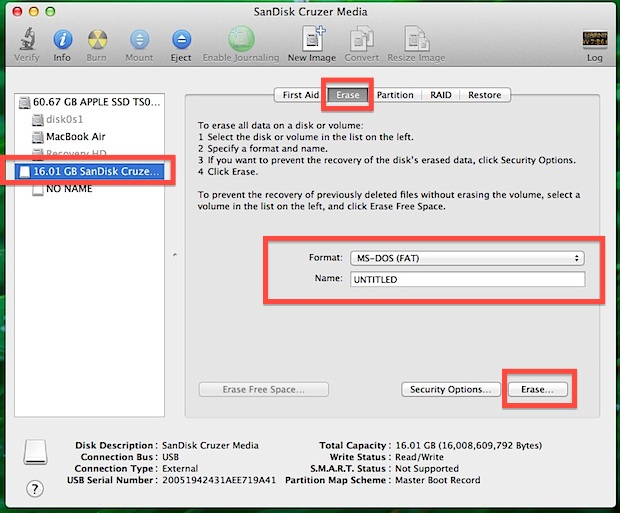Format USB Flash Drives to Work With Both Mac and Windows 7 by Jack Scicluna Photography, LLC - guest writer. The latest trend with computers is not including a CD/DVD drive. This article explains how to format a device or disk (e.g. USB flash drive, external hard drive) into the proper format that is accessible by both Mac and Windows computers: Disk Utility 12.x: Format a disk for Windows computers. In regards to your second question, check out this article: If QuickTime Player can‘t open an audio or video file. How to format internal and/or external drive to work properly on Mac and Windows computers? External data storage devices such as USB flash drives, external Hard Disk Drives (HDDs), and Solid State Drives (SSDs) provide one of the easiest ways to transfer files between separate computers without accessing the Internet. They will efficiently format hard drive or external device under Windows or Mac OS. And they will never cause any damage to your hard drive or shorten the service life of the hard drive/SSD/USB flash drive, etc. No.1 disk formatting tool for Windows and Mac – Built-in Formatting tool. Both Windows and Mac OS offer built-in disk formatting tool.

USB flash drives — also known as USB sticks — may be the best known and most used mass storage medium of our time. With these small electronic devices, almost all data types can be transferred from one computer to another. But especially those who work together with other people — in the workplace or at school or university — should take care to format their USB flash drive regularly. This eliminates any malware on the stick and prevents business partners, work colleagues, etc. from accessing private files and documents. At the same time, formatting optimally prepares the data medium for the recording of new data. This guide shows step-by=step how to format a USB flash drive for Windows or Mac.
The format of a USB flash drive is different on Windows PC than on Mac computers. Therefore, first follow the instructions for formatting the stick on a Windows PC. Below is the instructions for the Mac
Format a USB flash drive for Windows PC

Format A Flash Drive Mac
- We connect the USB stick to the PC on a suitable USB slot.
- Now click on the “My Computer” icon on the desktop of the PC (also called “Explorer” or “Computer” in newer Windows versions).
- A new window opens.
- We search in the left column the sub item “Removable Disk”. This is also drive E.
- Now, in the left column, right-click on “Removable Disk”, a new dialog will open.
- In this dialog box we search for the field “Format”. Click once with the left mouse button. It opens another dialog box.
- In this dialog box, we will now show the file system first. We click on the file system “FAT (default)”. The remaining fields remain unchanged.
- We click on the “Start” button.
- The error message now states that all files on the data carrier are permanently deleted. We confirm this by left-clicking on the “OK” button.
- The formatting starts.
- When the formatting is completed, the starting screen of item No. 6 will be displayed.
- Now we click on “Close”, because the formatting is finished and there are no more files on the storage medium.
- In the bottom right-hand corner of the system, right-click the symbol for the USB stick and click on “Eject”.
- We can now safely remove the USB stick.
Format a USB flash drive on a Mac

Format Mac Drive In Windows

- We connect the USB sticks to the PC on a suitable USB slot.
- We open the folder “Programs”.
- We open the subfolder “Utilities”.
- We open the utility “Disk Utility”.
- The left-hand column now shows all available hard disks and connected storage media. We click with the left mouse button on the USB stick.
- In the gray, right-hand area, we now click on the “Delete” tab.
- In the Volume Format menu we select “MS-DOS File System”.
- Click on the button “Delete”.
- A security dialog box opens. We also click on “Delete” here.
- The formatting process is in progress.
- We close the “Disk Utility”.
- We can now eject the USB stick as usual and then remove it.
Tips
- For volume format, the “MS-DOS file system” should always be selected if the USB stick is to be used on Windows and Mac computers.
- For Windows PCs: At step 6, the item “Quick Formatting” can also be selected. However, this should only be selected in an emergency, as the quick format is not executed very thoroughly.
- It may happen that the USB stick does not show the complete memory capacity even after formatting. This can be fixed by emptying the computer’s recycle bin. Often, the formatting files are stored in a kind of cache, which is thus also deleted.
The formatting of the USB stick should take place with regular use approximately once a month in order to make the best use of the storage capacity.
